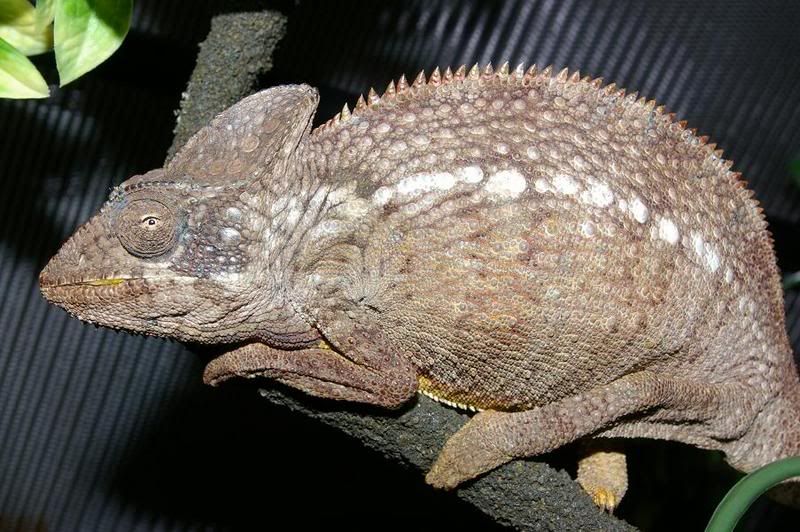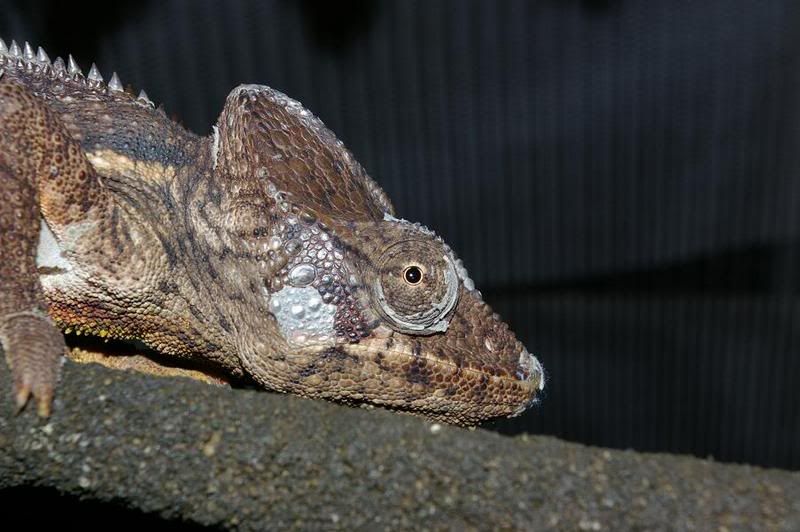| View previous topic :: View next topic |
| Author |
Message |
reptiles-ink
Contributing Member
Joined: 07 Sep 2006
Posts: 50
Location: yorkshire
|
 Posted: Mon Feb 12, 2007 6:33 pm Post subject: Furcifer oustaleti Posted: Mon Feb 12, 2007 6:33 pm Post subject: Furcifer oustaleti |
 |
|
Is there a sure way to identify the sex of Furcifer oustaleti?
Cheers |
|
| Back to top |
|
 |
Rickeezee
Site Moderator

Joined: 18 Nov 2005
Posts: 9249
Location: Kent
|
 Posted: Mon Feb 12, 2007 7:30 pm Post subject: Posted: Mon Feb 12, 2007 7:30 pm Post subject: |
 |
|
Females tend to be more colorful than the males with an adult female having a net like red pattern over her body if from Southern Madagascar. The females tend to be smaller and narrower than the males.
_________________
www.rickslivefood.co.uk
 |
|
| Back to top |
|
 |
reptiles-ink
Contributing Member
Joined: 07 Sep 2006
Posts: 50
Location: yorkshire
|
 Posted: Mon Feb 12, 2007 7:53 pm Post subject: Posted: Mon Feb 12, 2007 7:53 pm Post subject: |
 |
|
thanks for that.
I was told mine were males but had to take his word for it. they dont show any red at about 6 inch body size so I presume male is correct.
far easier with a veiled then lol |
|
| Back to top |
|
 |
Rickeezee
Site Moderator

Joined: 18 Nov 2005
Posts: 9249
Location: Kent
|
 Posted: Mon Feb 12, 2007 8:16 pm Post subject: Posted: Mon Feb 12, 2007 8:16 pm Post subject: |
 |
|
Oustalets can grow to over two feet in length, but more commonly 15-17 inches. The male will also be broader at the base of the tail than the female.
Not saying yours is, but if they are WC, and you have only recently aquired them I would highly recomend a course of Panacur to treat any parasitic load. Also a visual check for any filarial worms underneath the surface of the skin. Sorry not being a pessimist, just precautions if its WC animal. Plus the usual quarantine and extra care for ensuring they are well hydrated.
Even captive farmed herps should have fecal checks carried out as they are still susceptible to parasitic load as they will be in contact with insects that may bite them and pass on parasites.
Usually in nature the parasites are no major issue as it is in their interests for the host to remain alive, but when an animal is imported the stress factors that ensue via the import process etc lowers the animals immune system and then the parasites can be a problem.
Sorry going off on a tangent here 
_________________
www.rickslivefood.co.uk
 |
|
| Back to top |
|
 |
RobUKChams
I'm new here...
Joined: 19 Jan 2007
Posts: 10
|
 Posted: Mon Feb 12, 2007 11:06 pm Post subject: Posted: Mon Feb 12, 2007 11:06 pm Post subject: |
 |
|
Can you post a picture of your cham? I should be able to tell you.
Here are a few of mine when I kept them.
http://outdoors.webshots.com/album/231201721Ratyld
The males are redder but as you can see gravid females of certain locales are also a brown/red.
The tail base and casque are the usual way to tell them apart.
regards
Rob |
|
| Back to top |
|
 |
reptiles-ink
Contributing Member
Joined: 07 Sep 2006
Posts: 50
Location: yorkshire
|
 Posted: Tue Feb 13, 2007 11:31 am Post subject: Posted: Tue Feb 13, 2007 11:31 am Post subject: |
 |
|
you have some great photos there Rob.
heres what pics I have of mine so far

 |
|
| Back to top |
|
 |
RobUKChams
I'm new here...
Joined: 19 Jan 2007
Posts: 10
|
 Posted: Tue Feb 13, 2007 10:11 pm Post subject: Posted: Tue Feb 13, 2007 10:11 pm Post subject: |
 |
|
Definitely a male. They are great chams.
The top pic shows he has something on his lip/in his mouth. Chams get this because of a buildup of either food or mucus. This can be cleaned using a cotton bud and diluted betadine. Removing the scab (its not quite a scab but I can't think of a better way of describing it) might leave a few blood spots on the gums. Cleaning this every few days for a week or so will clear this up.
Another cause of the marking in the gum can be mucus from a slight respiratory infection. Assume he is not gaping or popping when breathing its more likely food.
Good luck
Rob |
|
| Back to top |
|
 |
|





